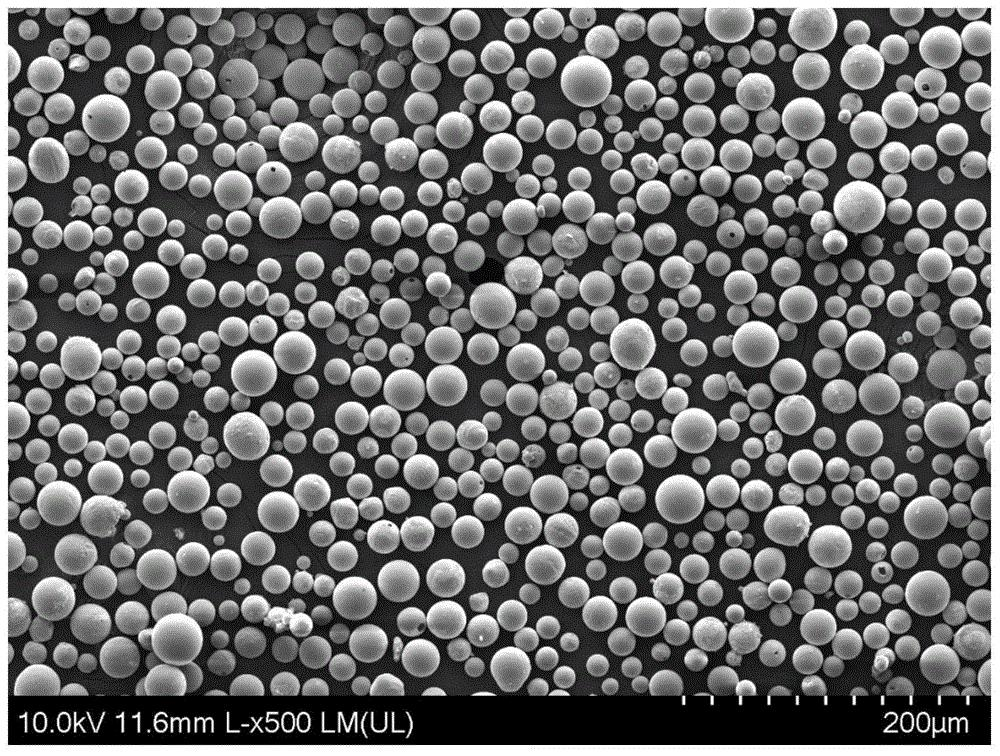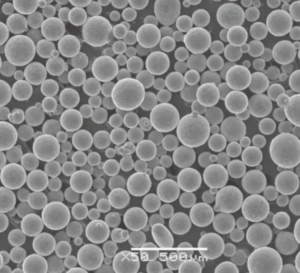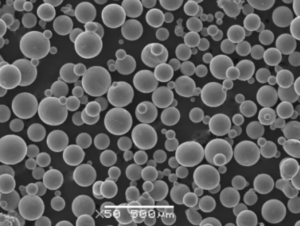新たな最先端技術としての3Dプリンティング技術は、人間の生産方法を大きく変えつつある。さまざまな産業で3Dプリンターが使用されるようになったことで、3Dプリンターの応用や開発もますます盛んになっている。 3Dプリント材料.この記事では、3Dプリントに使用される材料とは何か?
現在、3Dプリンティングに使用できる材料は200種類以上あり、この技術がますます多くの産業で使用されるようになるにつれて、当分の間はさらに多くの材料が使用されるようになるだろう。3Dプリンティングに使用される200種類以上の材料のうち、現在最も一般的に使用されているのは、金属、ポリマー、セラミック、複合材料、生体材料です。この記事では、さまざまな種類の材料と3Dプリンティングの用途について簡単に説明します。
金属材料
3Dプリンティング分野における金属材料の急速な発展は、航空宇宙、自動車、エレクトロニクスなどの需要に起因している。数ある金属材料の中で最も広く使われているのはチタン合金で、アルミニウム合金、ステンレス鋼がそれに続く、 高温合金そして 高エントロピー合金.

チタン合金 チタン合金は高強度、優れた耐食性、高耐熱性を持つ材料であるため、主に航空機エンジンの加圧部品に使用され、次いでロケット、ミサイル、高速航空機の構造部品に適用される。また、3Dプリントチタン合金は、低密度、高強度、軽量であるため、生物医学、3Dプリントチタンステントで使用されています。そして、生物医学的用途におけるチタン合金の使用は、かなり成熟し、普及している。
ステンレス鋼は、耐薬品性、耐高温性、良好な機械的特性を特徴とし、粉末成形性が良く、準備工程が簡単で低コストであるため、ジュエリー、機能部品、小さな彫刻の3Dプリント材料としてよく使用される。
高温合金は、高温での強度が高く、腐食に強いため、航空宇宙などの分野で広く使用されています。3Dプリンティング用に一般的に使用されるニッケル基合金のグレードには、以下のようなものがあります。 Inconel 625, Inconel 718そして インコネル939.
マグネシウムやアルミニウム合金、金や銀などの貴金属も、3Dプリンティングで広く使われている。
高分子材料
ポリマーは長い間、3Dプリンティングの材料として人気があり、その高い強度、性能、低コストのために広く使用されている。現在、最も一般的に使用されているのは、ABS、PA、感光性樹脂UVです。
セラミック材料
アルミノケイ酸塩セラミックパウダーは、3Dプリンティング用のセラミックパウダー材料の一種です。水を通さず、耐熱性があり、リサイクル可能であるため、食器、美術品、その他の用途に広く使用されています。
複合材料
複合材料には主に金属マトリックス複合材料と非金属マトリックス複合材料がある。強化ポリマー材料に印刷された複雑な形状の部品は、耐熱性や耐薬品性に優れているため、主に航空宇宙などの用途で使用されています。
これらは一般的な3Dプリント材料のほんの一部だが、もちろん、生物学的足場プリントや細胞プリントを可能にするバイオニック3Dプリント材料のクラスもある。
3Dプリンティング材料がますます豊富になり、3Dプリンティング技術が急速に発展するにつれて、3Dプリンティング材料はより多くの分野で使用されるようになり、より優れた機械的特性、より高い加工性能、より多様な用途へと発展していくことが考えられます。3Dプリンティング材料は、より多くの分野で使用され、より優れた機械的特性、より高い加工性能、より多様なものへと発展していくだろう。
Additional FAQs on 3D Printing Materials
1) What factors determine which 3D printing process to use for a material?
- Key drivers: melting/softening behavior, reactivity/oxidation, viscosity (for resins and pastes), required part properties, dimensional tolerances, and cost. For example, titanium fits laser powder bed fusion (LPBF) with inert gas, while ABS and PA suit FDM/SLS.
2) How do metal powder specifications impact print quality?
- Particle size distribution (typically D10–D90 ≈ 15–45 μm for LPBF), sphericity, low interstitials (O/N/H), and low contamination directly affect flowability, density, and mechanical properties. Reference: ISO/ASTM 52907 for feedstock.
3) Are biocompatible materials available for medical 3D printing?
- Yes. Titanium alloys (Ti‑6Al‑4V ELI), cobalt‑chromium, PEEK/PEKK, medical‑grade photopolymers, and bio‑inks (hydrogels with cells) are used for implants, guides, and tissue scaffolds, subject to ISO 10993 and FDA/CE pathways.
4) What’s the difference between thermoplastics used in FDM vs. SLS?
- FDM uses filament that melts and extrudes (e.g., PLA, ABS, PETG, PEI/ULTEM), while SLS fuses powder beds of PA12, PA11, TPU, and filled nylons. SLS typically yields better isotropy and complex geometries without supports.
5) Can composites be 3D printed to replace metals?
- In some cases. Carbon‑fiber or glass‑fiber reinforced PA/PEEK printed with continuous fibers can approach aluminum‑like stiffness/strength on a weight basis, suitable for jigs, fixtures, and some end‑use parts; temperature and impact limits still apply.
2025 Industry Trends in 3D Printing Materials
- Blue/green laser LPBF broadens copper/aluminum applications in e‑mobility and thermal management.
- Medical polymers mature: sterilizable high‑performance polymers (PEEK/PEKK, PPSU) gain validated print profiles and regulatory guidance.
- Sustainable materials: bio‑based nylons (PA11 from castor), recycled PETG/PA, and closed‑loop powder handling with material passports.
- Binder jetting scaling: steel and copper binder‑jet with refined sinter/HIP achieves 95–99% density for large, cost‑sensitive parts.
- High‑entropy and gradient alloys: research moves toward printable, compositionally graded metals for site‑specific properties.
| 2025 Metric (Material + Process) | Typical Range/Value | Why it matters | ソース |
|---|---|---|---|
| LPBF powder PSD (most metals) | D10–D90 ≈ 15–45 μm | Stable recoating, low porosity | ISO/ASTM 52907 |
| Ti‑6Al‑4V ELI powder oxygen | ≤0.13 wt% | Fatigue/ductility in implants | ASTM F136/F3001 |
| SLS PA12 tensile strength | 45–55 MPa (XZ); 40–50 MPa (ZX) | Design allowables | OEM datasheets/ASM |
| FDM CF‑PA tensile modulus | 8–20 GPa (with continuous CF) | Metal replacement potential | Vendor tech notes |
| Binder‑jetted 17‑4PH density | 97–99% after sinter/HIP | Tooling/production parts | Vendor case studies |
| Copper LPBF conductivity | 80–95% IACS with green lasers | Thermal/electrical performance | Peer‑reviewed AM studies |
Authoritative references and further reading:
- ISO/ASTM 52907 (AM feedstock): https://www.iso.org
- ASTM F2924/F3001/F3055/F3184 (AM materials): https://www.astm.org
- NIST AM Bench datasets: https://www.nist.gov
- FDA guidance on additive manufacturing of medical devices: https://www.fda.gov
Latest Research Cases
Case Study 1: Green‑Laser LPBF of Pure Copper Heat Sinks for Power Electronics (2025)
Background: An inverter manufacturer needed compact, high‑conductivity heat sinks; IR lasers struggled with Cu reflectivity.
Solution: Adopted 515 nm green‑laser LPBF with high‑sphericity gas‑atomized Cu powder (15–45 μm), inert chamber with O2 < 100 ppm, and scan strategies to reduce spatter.
Results: 90–95% IACS conductivity, porosity <0.2%, 14% lower junction temperature vs. machined baseline; 30% recycled powder blend maintained specs over 6 cycles.
Case Study 2: SLS PA11‑CF Ducts for eVTOL Environmental Control Systems (2024)
Background: Aerial mobility OEM sought lightweight, chemical‑resistant ECS ducts with complex routing.
Solution: Printed bio‑based PA11 with chopped carbon fiber on SLS; post‑processed with vapor smoothing and QA via CT sampling.
Results: 22% mass reduction vs. aluminum tubes, impact strength improved 18% over PA12 baseline, passed DO‑160 chemical exposure tests.
Expert Opinions
- Prof. John Hart, Professor of Mechanical Engineering, MIT
Key viewpoint: “Linking in‑situ build data with powder passports will set the norm for serial qualification across metals and polymers.” - Dr. Laura Schmidt, Head of Additive Manufacturing, Fraunhofer IAPT
Key viewpoint: “Green and blue lasers are transforming copper and aluminum from niche to production materials in LPBF.” - Dr. Dieter Schirmacher, Materials Scientist, Medical AM Consultant
Key viewpoint: “Validated print parameters and sterilization pathways for PEEK/PEKK are accelerating adoption in load‑bearing implants.”
Citations for expert profiles:
- MIT: https://meche.mit.edu
- Fraunhofer IAPT: https://www.iapt.fraunhofer.de
Practical Tools and Resources
- Standards and safety
- ISO/ASTM 52907; ASTM F2924/F3001/F3055/F3184; ISO 10993 (biocompatibility); NFPA 484 (combustible metals)
- Powder and filament QC
- LECO O/N/H analyzers: https://www.leco.com
- Laser diffraction PSD, SEM morphology, moisture analyzers
- Filament roundness/diameter gauges for FDM
- Design and simulation
- Ansys Additive, Simufact Additive, Autodesk Netfabb; nTopology for lattices and conformal cooling
- Market and datasets
- Senvol Database (machines/materials): https://senvol.com/database
- NIST AM Bench datasets: https://www.nist.gov
Last updated: 2025-08-21
Changelog: Added 5 FAQs, a 2025 trends table with metrics and sources, two new case studies (copper LPBF and PA11‑CF SLS), expert viewpoints with citations, and practical tools/resources.
Next review date & triggers: 2026-02-01 or earlier if ISO/ASTM standards update, major OEMs publish new copper/aluminum LPBF datasets, or medical AM material guidance changes.

